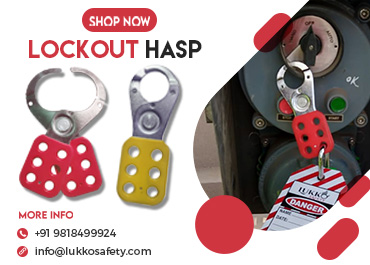As the hot season in India reaches its peak with temperatures soaring to 50 degrees Celsius, it’s essential for businesses to prepare for the unique hazards that come with this extreme heat. High temperatures, intense sunlight, and increased outdoor activity can pose significant risks to workers’ health and safety. At Lukkosafety.com, we are committed to helping you create a safe and productive workplace environment. Here are some crucial summer safety tips to help you mitigate seasonal hazards and protect your employees.
1. Stay Hydrated
Hydration is key: Dehydration can quickly lead to heat-related illnesses. Ensure that all employees have easy access to cool, clean drinking water. Encourage them to drink water frequently, even if they do not feel thirsty. Providing electrolyte drinks can also help replenish essential minerals lost through sweat.
2. Provide Shade and Cooling Breaks
Create shaded rest areas: For outdoor workers, it’s vital to have shaded areas where they can take breaks and cool down. Use tents, canopies, or natural shade to create these spaces.
Schedule regular breaks: Implement a schedule that allows for regular, mandatory breaks in shaded or air-conditioned areas. This practice helps reduce the risk of heat stress and allows workers to recover from the heat.
3. Use Cooling Products
Cooling towels and vests: Provide cooling towels, vests, and other cooling gear to help employees regulate their body temperature. These products can significantly reduce the risk of heat-related illnesses.
Fans and portable air conditioners: Improve air circulation in enclosed or poorly ventilated areas with fans or portable air conditioners. This is especially important in warehouses, kitchens, and other indoor environments where temperatures can rise quickly.
4. Implement UV Protection
Sun protection gear: Equip outdoor workers with wide-brimmed hats, UV-blocking sunglasses, and high-SPF sunscreen. Encourage the use of long-sleeved shirts and long pants made from lightweight, breathable fabric to provide additional protection without causing overheating.
Sunscreen availability: Place sunscreen dispensers in strategic locations to ensure easy access and frequent application. Remind employees to reapply sunscreen throughout the day, especially if they are sweating or working near water.
5. Educate on Heat-Related Illnesses
Training sessions: Conduct regular training sessions on recognizing and preventing heat-related illnesses. Educate employees on the symptoms of heat exhaustion and heatstroke, and ensure they know how to respond in case of an emergency.
Emergency procedures: Develop clear emergency response plans for heat-related illnesses and communicate these procedures to all employees. Make sure first aid kits are well-stocked with supplies for treating heat stress, including cold packs and instant ice packs.
6. Adjust Work Schedules
Work during cooler hours: Whenever possible, schedule outdoor work for the cooler parts of the day, such as early morning or late afternoon. This reduces exposure to peak heat times and helps prevent heat-related illnesses.
Flexible scheduling: Consider flexible scheduling options that allow workers to start earlier or finish later to avoid the hottest parts of the day.
7. Protect Against Insects
Insect repellent: Provide insect repellent to protect workers from bites, especially in areas prone to mosquitoes and ticks. Educate employees on the importance of using repellent and wearing appropriate clothing to reduce the risk of insect-borne diseases.
Regular inspections: Conduct regular inspections to identify and eliminate standing water where mosquitoes breed. Keep work areas clean and free of debris that could harbor insects.
Conclusion
By taking proactive steps to address the hazards associated with the summer season, you can create a safer and more comfortable workplace for your employees. At Lukkosafety.com, we are dedicated to providing you with the resources and equipment needed to maintain a safe work environment year-round. Remember, a well-prepared team is a safe team. Stay cool, stay safe, and enjoy a productive summer!
For more safety tips and equipment, visit Lukkosafety.com today.



